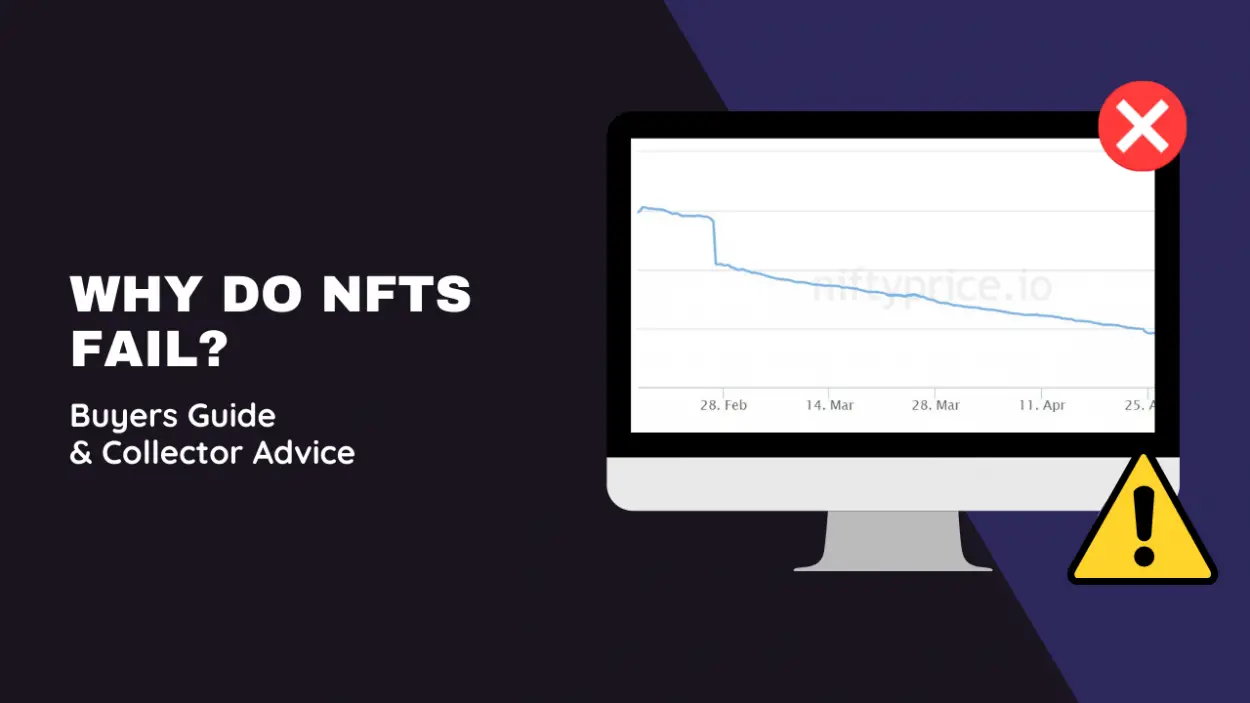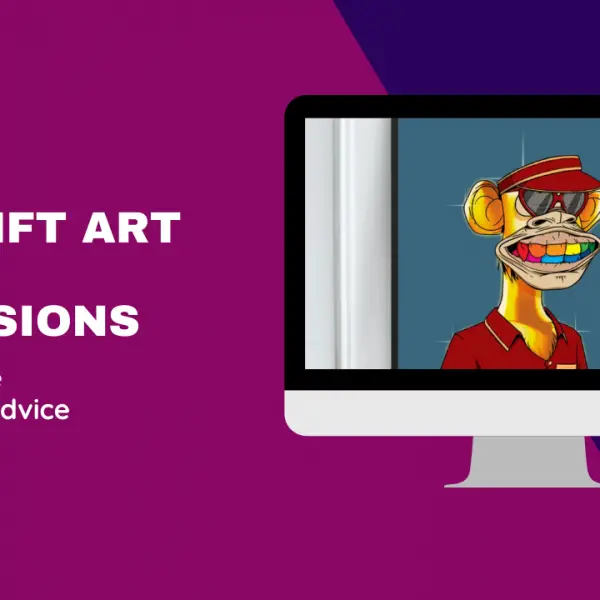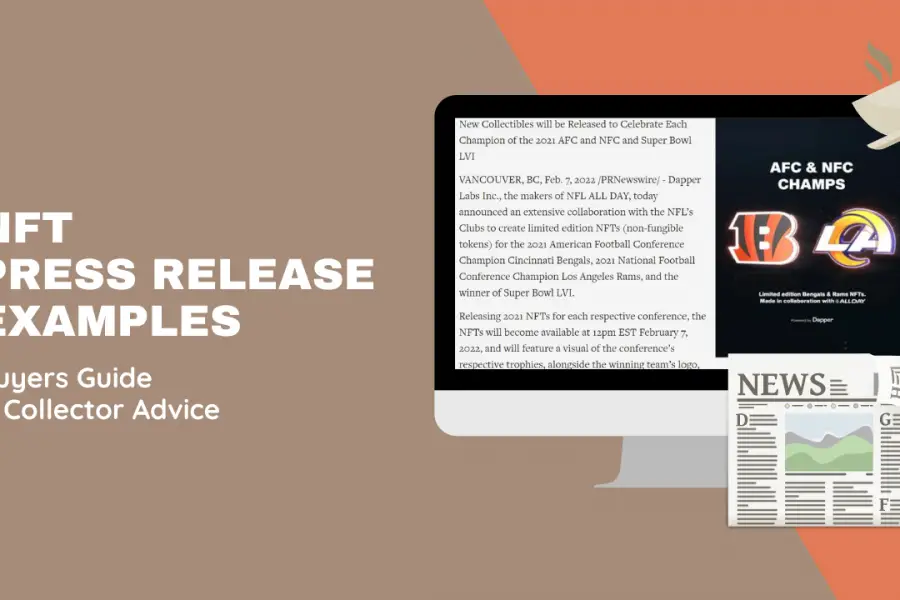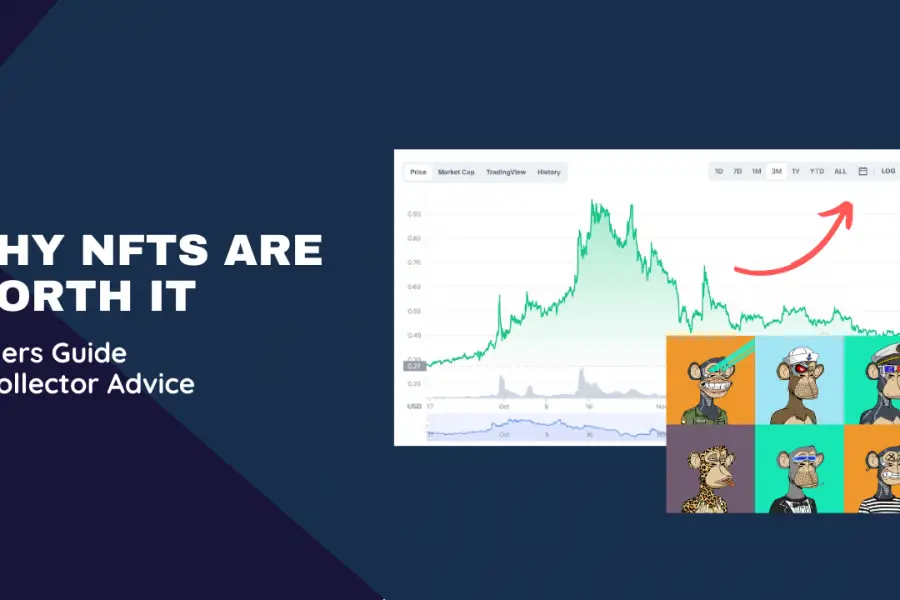We’ve seen numerous failed nft projects and wonder why do they fail? Our guide explains why failed nft collections happen, what causes it, and how to avoid it from happening to your project.
We share the biggest celebrity nft project failures and examples of failed non-fungible projects so you can learn from the mistakes others make to prevent them from happening to you.
Lastly, we go over the challenges these collections go through and solutions on what to do if you are in that situation.
Let’s start with the basics:
What’s a Failed NFT Project?
A failed NFT project is a collection that declines in trade volume, and its floor price dips more than 60% or between 0.05 or 0.01 ETH have likely failed. A failed nft project typically has an nft floor price loss of 90% or more in less than six months is a failed project.
Additionally, decreasing nft holders over time can indicate a failed project. However, sometimes the number of nft holders increases during the floor price decreases because they are more affordable to acquire.
A failing nft collection can be due to external and internal factors. For example, if the developers and teammates pause production, it can result in a failure, also known as a ‘rug pull.’
One of the most common reasons for an nft fail is lacking a clear nft roadmap.
Have you seen our NFT Toolkit? It provides those with a Canva NFT Roadmap Design Template to help others get started on their nft roadmap strategy.
5 Reasons Why An NFT Project Fails And How To Avoid Them
To understand what causes an nft project to fail, you need to know at what point it could fail and use risk management tactics to prevent that from happening. By planning out and learning about how others have failed in the past, you can avoid doing the same.
1. Launch failure.
Failing to launch an nft before it has the chance to get off the ground is a high possibility for new nft owners.
The challenge to overcome:
NFT Projects that don’t innovate or share something different from others will challenge promoting their collection and increasing trade volume.
All of which can impact how many views you get on OpenSea and how many nft owners your project will have in the long term.
Can your project give emotional dividends to someone or help them become a better version of themself? Take the time to plan out why your nft collection is worth investing in and what benefits your holders will get when owning it.
For example, DC introduced Bat Cowl taking Batman fans on an entire 2+ year journey with member-only benefits. Those who hold a Bat Cowl NFT will have the chance to change the storyline of new upcoming comics by voting and getting access to exclusive collectibles.
Solution:
Brainstorm nft ideas and conduct planning to establish a competitive roadmap.
Include utilities like in-person events, community treasury, and exclusive holder benefits.
There’s also an NFT Launch Strategy resource, which can get you moving in the right direction before it’s too late.
2. Community growth & engagement failure.
Failing to grow a community can be a downfall for your nft project, whether online or in real life.
The challenge to overcome:
It’s challenging to pick where your community should exist, especially when there are so many social platforms like Facebook, Twitter, Discord, etc. However, deciding where is essential and recruiting new members takes a lot of effort and patience.
Most nft project owners are in a rush to get their project launched, and they don’t spend enough time establishing a consistent audience interested in their work.
Solution:
Pick a social platform to start with and get involved. For example, most nft collections use discord to foster a community because of its accessible server setup, text-based communications and allows for audio-only channels.
Hire some mods to help maintain the nft discord channel and set up the channels.
Create incentives for new members in your discord channel. Also, promote your discord channel on other social platforms like Twitter to get everyone excited to join.
3. Decline in hype, buzz, or attention.
Failing to engage an existing community or crashing after having too much attention is another way to fail.
The challenge to overcome:
Understand the consequences of listening to the hype, and the next time your friend says, ‘have you heard of this new nft project?’, be careful as popular nft projects tend to fall as quickly as they arise.
Since everyone knows about it and wants to buy into it, it’s likely not a good investment because there are not enough people beyond them to get involved. In short, those projects tend to slow down and dip because demand runs out.
Solution:
Instead, please do your diligence to find nft collections worth investing in due to their clear roadmap, commitment to their community, and passionate reputable teammates.
4. Rug pull.
Failing to keep your talent motivated can result in your development team pulling out.
The challenge to overcome:
A ‘rug pull’ is when developers stop production, and the nft loses all its value because the nft owner decides to liquidate their digital assets. It impacts nft holders because their nft loses all its value at once.
Nothing is worse than when investors get an unexpected failed nft project losing all of their money at once. NFT owners are responsible for providing value and keeping their projects going over the long term, even when interest dies down. However, it’s easy for nft owners to take shortcuts and make short-term decisions that can hurt them.
Gary Vee explains that those who rug projects will lose their chance to participate in this community when non-fungible tokens become more significant than the internet. While some NFT owners who rug pull think they get away with it, others are watching and learning not to trust those individuals again. You only have one reputation, so you have to be careful not to mess that up.
Solution:
Know the team behind the nft project and avoid investing in non-fungible tokens where team members are unreliable. An excellent telling sign to avoid investing in these tokens is when the nft owner abandons their roadmap.
Monitor an nft project for serval months before deciding to invest and only use the money you are willing to lose.
5. Celebrities get caught in scams or scandals.
Celebrities can find themselves or others acts within fraud and so you’ll want to becareful when they are owning an nft project.
The challenge to overcome:
As celebrities get involved with NFTs, their excitement for them increases. However, it also creates a higher chance of a rug pull or a scandal because public figures have a lot of attention, creating unnecessary pressures.
Unfortunately, just because a celebrity is involved in a project doesn’t mean it’s safe to invest your hard-earned money into it.
Solution:
Don’t fall for the hype. Instead, verify the intelligent contracts offered via the blockchain before purchasing when a celebrity is involved in the project.
Popular Failing NFT Projects
Here’s a list of failed nft project examples
1. Pixelmon – (https://www.niftyprice.io/collections/pixelmongen1)
![]()
The floor price started at 1.39 and is now at 0.25 ETH, a 98% drop in 5 months.
![]()
NFT Holders had the highest amount of owners at 5,982 during their first month, and after six months, they only had 4,903. They were resulting in a -18% decrease.
![]()
2. MekaVerse – (https://www.niftyprice.io/collections/mekaverse)

The floor price started at 1.85 and is now at 0.32 ETH, an 83% drop in 5 months.

NFT Holders had the highest amount of owners at 5,096 during their first month, and after six months, they only had 4,742. They were resulting in a -7% decrease.
3. The Indifferent Duck – (https://www.niftyprice.io/collections/theindifferentduck)

The floor price started at 0.34 and is now at 0.005 ETH, a 98% drop in 5 months.

NFT Holders had the highest amount of owners at 4,686 during their first month, and after six months, they only had 4,496. They were resulting in a -4% decrease.
4. Phanta Bear – (https://www.niftyprice.io/collections/phantabear)

The floor price started at 6.36 and is now at 0.64 ETH, an 89% drop in 5 months.

NFT Holders had the highest amount of owners at 4,886 during their first month, and after six months, they only had 5,156. They were resulting in a +5% increase.
How Many NFT Projects Fail?
On average, 80% will fail and fold within 18 months once it has launched into the marketplace.
As Gary Vee, according to the Business Insider, said, “I put out content every week saying that 98% of NFT projects are going to zero. Most of the behavior I see in NFT buying reminds me of how people bought beanie babies.”
Largely, due to a lack of having a detailed enough roadmap. Our NFT roadmap template helps avoid such a massive mistake.
How can you tell when an NFT Project is Failing?
Digital assets are known for being ‘risky,’ When buying non-fungible tokens, it’s essential to understand how much tolerance you have for projects drip in overall value.
Most new collectors will jump into a project when it’s at a premium or a peak, and when trading volume slows down, they either sell before it completely crashes or holds with the hope of it coming back in the future.
You need to have an exit plan and know when to get out or how long you’ll hold on over the long term. Make sure to use the money you are willing to lose, and you won’t have anything to worry about when you see signs of failure.
3 Failed Celebrity NFT Projects resulting in the biggest NFT fails
- Wrestler John Cena: Most collectors feel it’s a cash grab and has no long-term value, resulting in only 37 packages sold.
- CryptoZoo: Youtuber Logan Paul’s nft first collection resulted in low floor prices and difficulty selling after being closely related to the Pokémon concept suggesting it wasn’t original.
- Mayweather: Mayweather professional boxer with no defeats, hides his nft project failure covering up the fact that it didn’t make enough sales and he was scamming others.
Can NFT Projects Make a Comeback?
Evidence shows when an nft collections floor price drops; it’s hard for it to increase; however, it is possible, and the lower-Price starts to drive demand. What’s more important to consider is how many nft holders remain when a project loses the majority of its holders, then it’s more challenging to make a comeback.
There are two cases you should monitor before taking action:
1. NFT Floor Price Falls: It’s time to consider how long you’ll hold for before it’s too late. Most collectors who remain long-term focused can weather most storms. However, cryptocurrency and digital assets like these have high risks and volatility.
2. NFT Holders Sell-Off: It’s time to consider if the holding benefits outweigh the perks of not holding it.
Avoid Failed NFT Collections Using These Tips
Look to invest in ‘Blue Chip NFT Projects’ only because they have the highest chance of succeeding and not failing.
Always do your research before making a purchase, and it starts with using nft tools to analyze actual data from the blockchain.
Nifty Price (.io) is a great free tool for high-quality collections and tells you all you need to know between the floor price and the number of holders.
If you’ve enjoyed reading this article about failing nft projects, you may also like:





